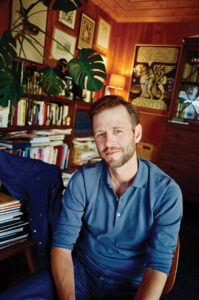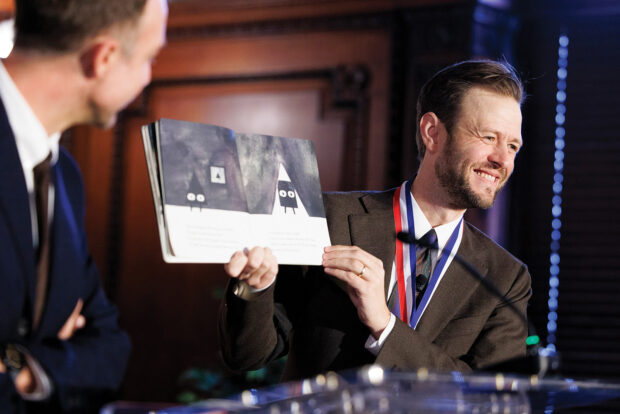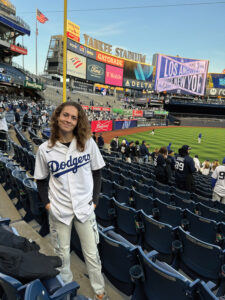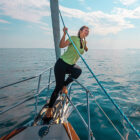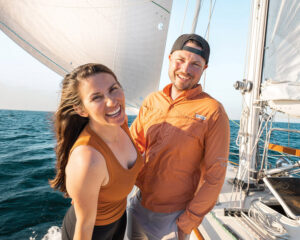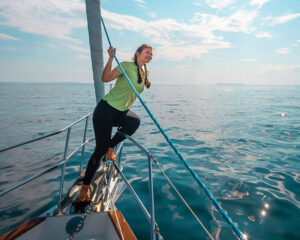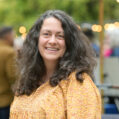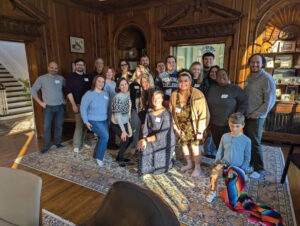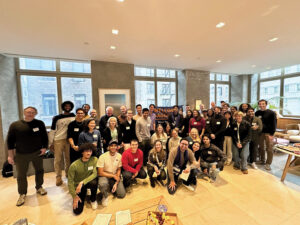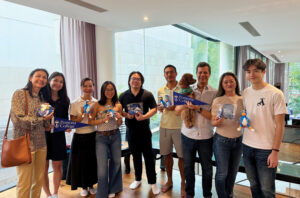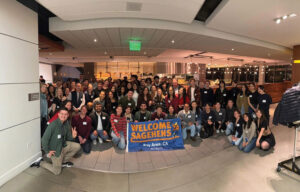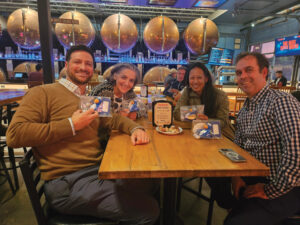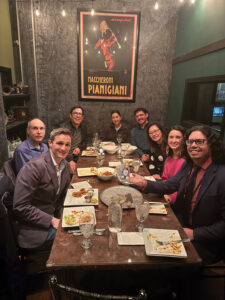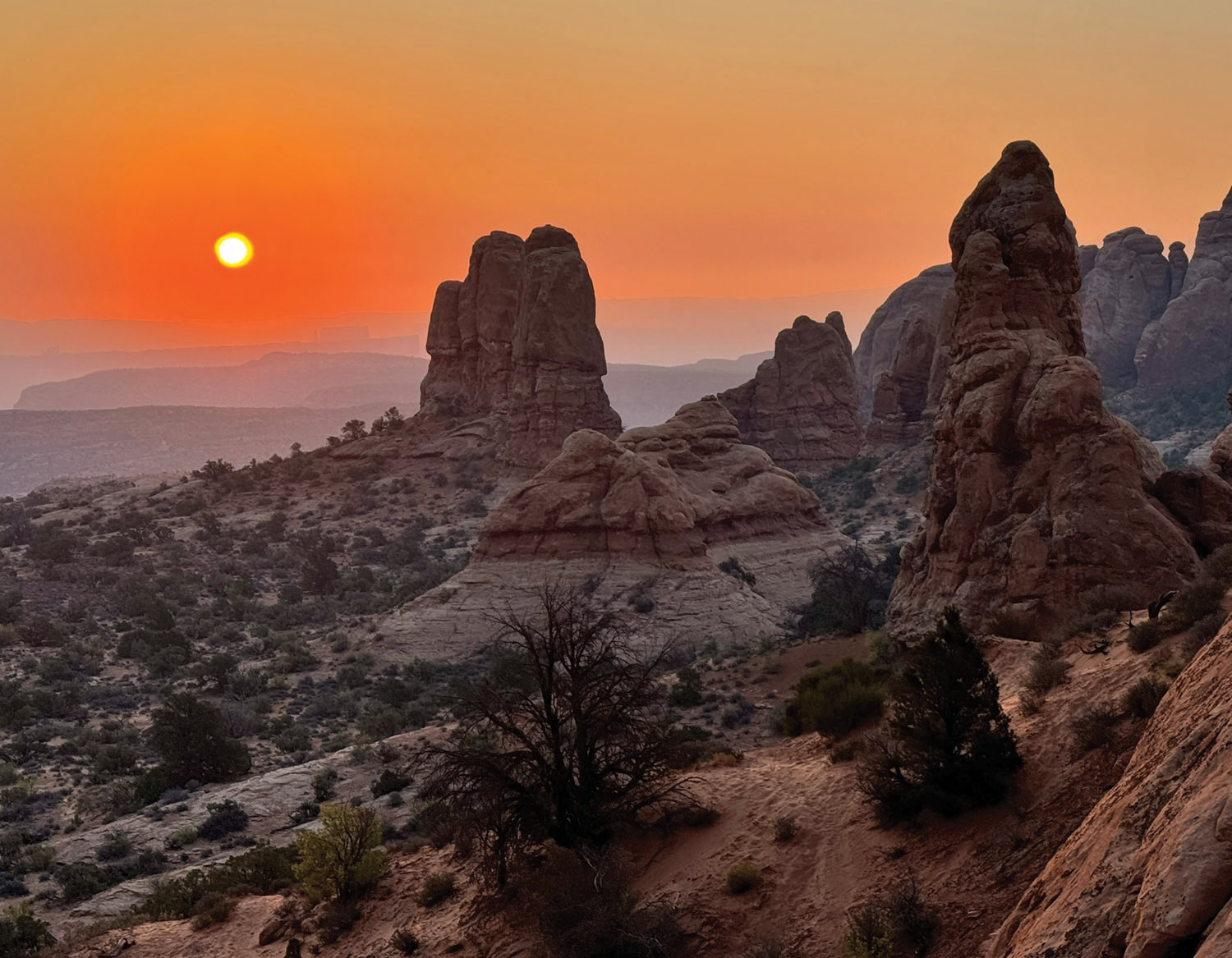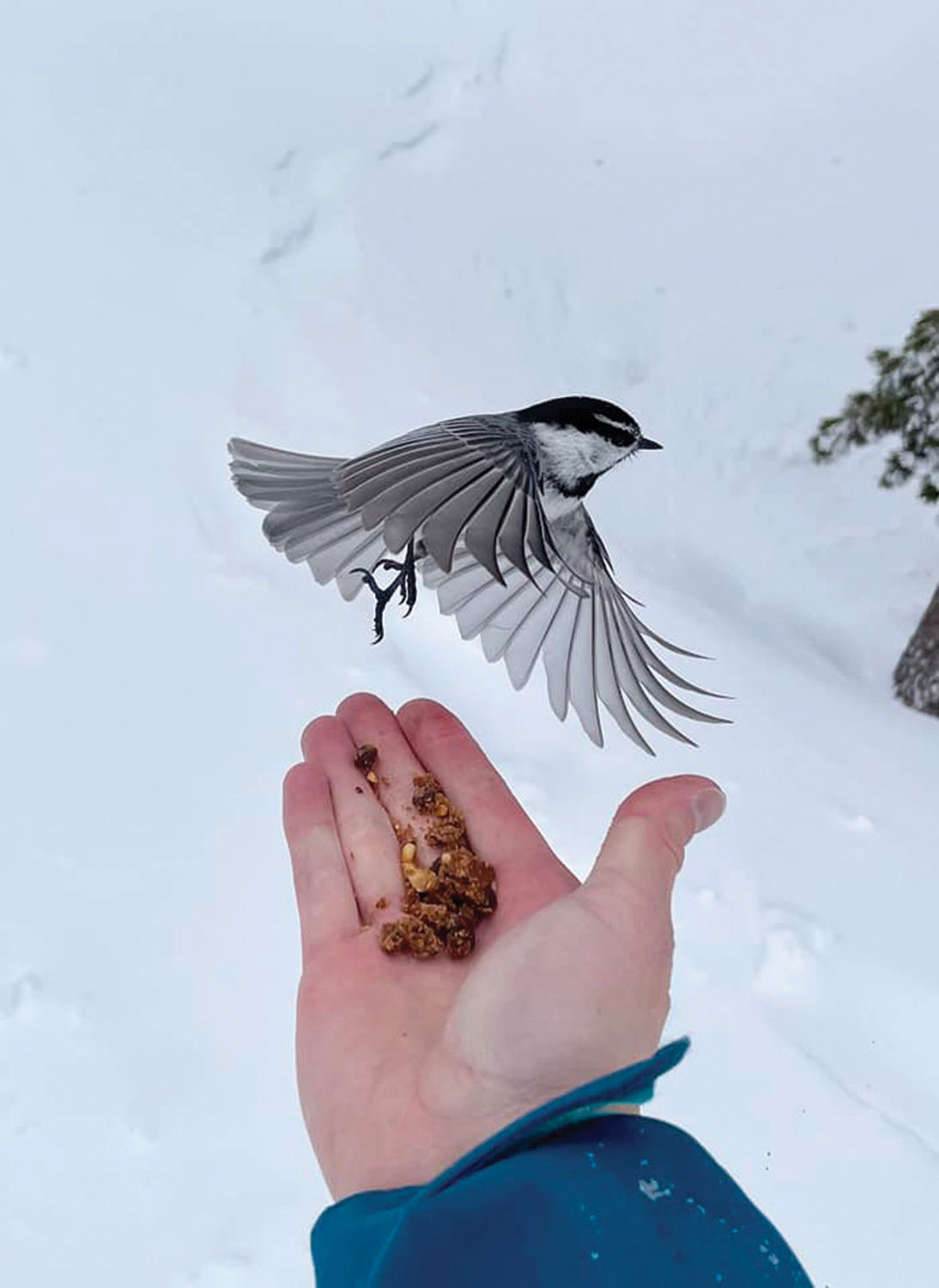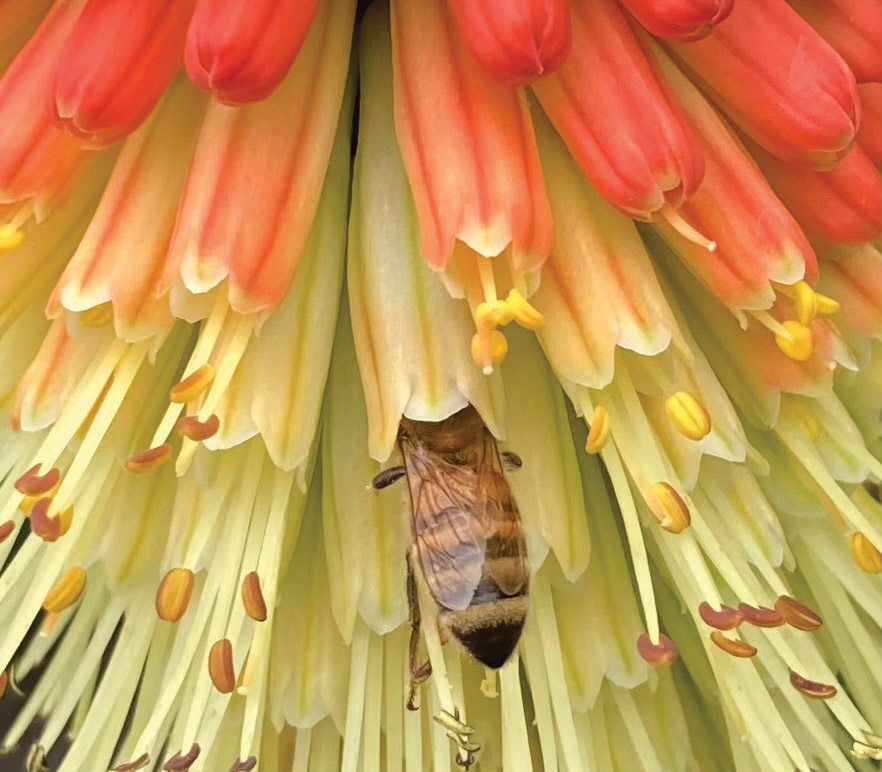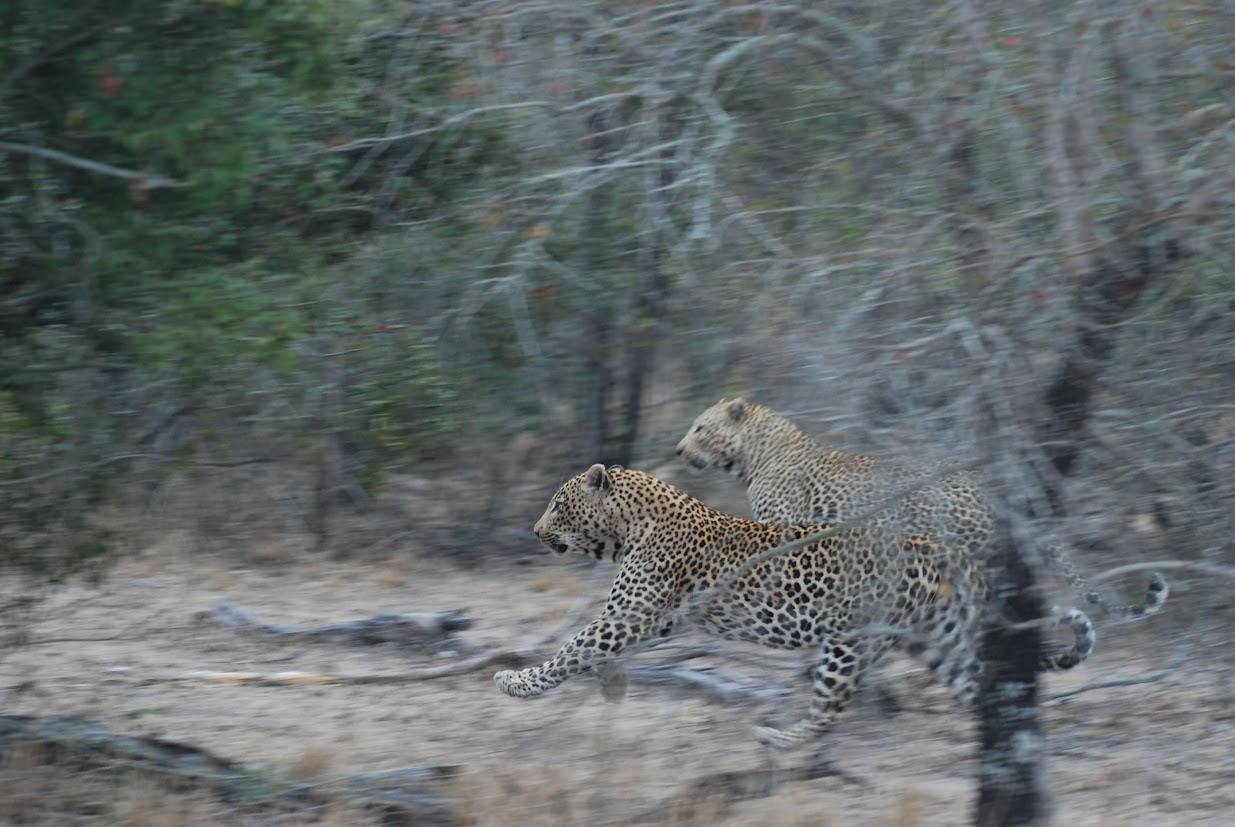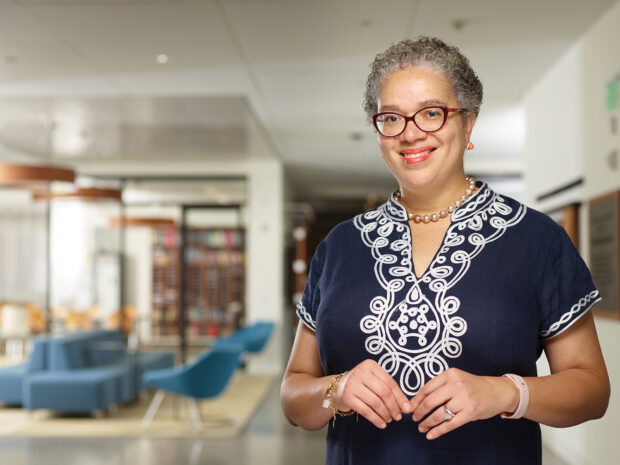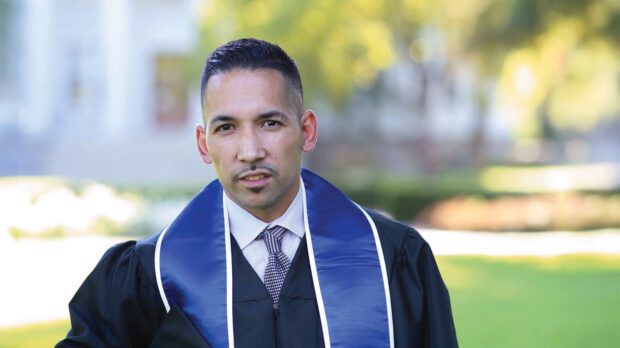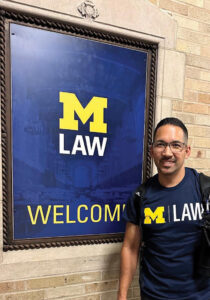
What is the role of creativity in steering the work of dancers, poets, scientists and activists? What follows is a condensed and collated conversation with four Pomona professors from different fields, drawing on themes about the practice and teaching of what it means to create.
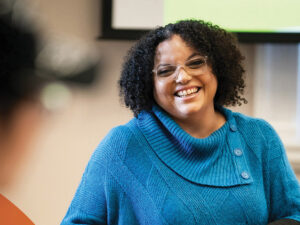 Esther Hernández-Medina, assistant professor of Latin American studies as well as gender and women’s studies, is a feminist academic, public policy expert and activist from the Dominican Republic.
Esther Hernández-Medina, assistant professor of Latin American studies as well as gender and women’s studies, is a feminist academic, public policy expert and activist from the Dominican Republic.
 Jane Liu, professor of chemistry professor, is also CEO of BRT Biotechnologies, a small-molecule drug discovery startup she co-founded with fellow Sagehen Greg Copeland ’96.
Jane Liu, professor of chemistry professor, is also CEO of BRT Biotechnologies, a small-molecule drug discovery startup she co-founded with fellow Sagehen Greg Copeland ’96.
 John Pennington, associate professor of dance, is the artistic director of Pennington Dance Group and ARC (A Room to Create) Pasadena after a career as a performer and teacher with the Bella Lewitzky Dance Company.
John Pennington, associate professor of dance, is the artistic director of Pennington Dance Group and ARC (A Room to Create) Pasadena after a career as a performer and teacher with the Bella Lewitzky Dance Company.
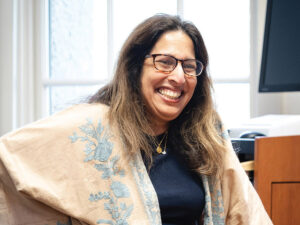 Prageeta Sharma, Henry G. Lee ’37 Professor of English, is the author of six collections of poetry, including Onement Won, to be published in September. She is a recipient of a 2025 National Endowment for the Arts Creative Writing Fellowship.
Prageeta Sharma, Henry G. Lee ’37 Professor of English, is the author of six collections of poetry, including Onement Won, to be published in September. She is a recipient of a 2025 National Endowment for the Arts Creative Writing Fellowship.
Q: Welcome, all. We’re interested in how you think about creativity. Is it innate? Is it a practice, something that can be summoned?
Pennington: I think this has been a question of the ages. You’ve often heard about “the muses descending” and all of these ways that people are creative, and no one can put their finger on it. Over the years, particularly working in a liberal arts college and through my own investigation and curiosity, I’ve found that creativity lies a lot in neuroscience.
There’s the prefrontal cortex; it’s the executive director. There’s also the “fight or flight” response of the sympathetic nervous system. So there’s a saying that creativity comes in the three B’s—the bed, the bath and the bar. If you look at the bed, the bath and the bar, those are three places that you relax and you feel safe, for the most part. The prefrontal cortex kind of shuts off. The “fight or flight” response is not active, either. A lot of artists have said that they have their most creativity before falling asleep or when they wake up, and that’s when the brain is partly shut down.
Q: That reminds me that Paul McCartney [of the Beatles] has said the melody of “Yesterday” came to him in a dream. Have any of you had ideas or solutions come to you that way?
Liu: I don’t know if I’ve solved the problem in my dream but when you’re sort of dozing, something might come in there. I actually will make sure I get up and go write it down. Maybe that’s the key, [since] I’d like to sleep … I don’t want to stay up and work it out, but I don’t want to forget it, either!
Q: Jane, many of us think first of the arts when we think about creativity. But what is the role of creativity in the sciences?
Liu: Whenever you’re doing scientific research or trying to progress science forward, you’re never doing the same thing someone else did. It always has to be something new. You need to think: What is the question I even want to ask? That requires creativity. Then, how are you going to approach answering that question or testing your hypothesis? You and I could ask the exact same question but take two completely different approaches based on what inspired us at that time, what our background is, what we read that morning or the conversation we had down the hall. So pulling these different pieces together—and then fitting that into progressing science and doing scientific research—that, to me, is a creative process.
Design as Process for Impact
What is The Hive?
The Hive, more formally known as the Rick and Susan Sontag Center for Collaborative Creativity, aims to foster collaboration and innovation for students of the Claremont Colleges.
What does The Hive do?
The Hive is a design and innovation center that hosts courses and activities that are exploratory, collaborative, and experiential, including…
- full-credit courses in Human-Centered Design and Impact Innovation
- workshops and events that introduce alternative ways of engaging with the liberal arts
- makerspaces where students are given access to materials for building, prototyping, sewing, screen printing, woodworking, and music production
- courses from around the 7Cs
Who does The Hive work with?
The Hive offers human-centered design collaborations with a diverse variety of community partners, ranging from The LA Department of Health to LAist Public Radio and StoryHouse Ventures.
Q: Esther, what are some of the ways you experience creativity in the social sciences?
Hernández-Medina: The area where I use creativity the most is in my teaching. Especially during the pandemic, I really rethought and retooled all my classes. Pomona’s Information Technology Services and The Claremont Colleges Center for Teaching and Learning had all these workshops, and I took almost all of them. One way is putting together digital books: We use Pressbooks to collect students’ class papers. It makes them feel empowered as authors: “Oh, wait, I am publishing, this is so cool.” Some use the link in their graduate school applications. I also sometimes use the link to their papers in the digital book when I’m writing recommendation letters for them. The students are the ones who come up with the title for the book, the subtitles, the art for the cover. So that’s another way of making them reconnect with their creativity. In some of my classes, the final project is now a podcast about their papers, after learning how to produce and edit podcasts at The Hive.
Q: Prageeta, as a poet, how do you draw out creativity in your students?
Sharma: For me, creativity comes from reading and teaching and community and attachment. What is so much fun for me is this class on the theme of diaries and daybooks that I’m teaching now. My late husband was married prior to me, and he left me his first wife’s diary she had kept for many years in the 1990s before she died in 1998. She was a really stunning person and it’s a beautiful diary. He said, “Please write about her if you feel compelled to.” I also have his writings that he left me, notes for me to read after he passed. So in class we started talking about what diaries mean to us, what kind of writing we find there, and what we hope to imagine for ourselves with private writing. I try to bring questions and subjects and work I’m engaged with to my students, to think and work and share interests together. We nurture, I think, a safe classroom that becomes sacred to our writing and to our ideas of ourselves.
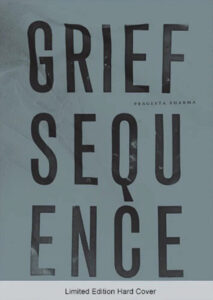 Q: You’ve been able to keep writing poetry at such difficult times in your life, publishing the collection Grief Sequence following the death of your first husband, Dale Sherrard, to cancer in 2015. You tragically lost your second husband, Mike Stussy, to cancer in 2023, and your upcoming collection Onement Won includes poems you wrote during his illness. It’s so common for people to try to shut everything out. Did you will yourself to continue writing? Or was it a form of therapy?
Q: You’ve been able to keep writing poetry at such difficult times in your life, publishing the collection Grief Sequence following the death of your first husband, Dale Sherrard, to cancer in 2015. You tragically lost your second husband, Mike Stussy, to cancer in 2023, and your upcoming collection Onement Won includes poems you wrote during his illness. It’s so common for people to try to shut everything out. Did you will yourself to continue writing? Or was it a form of therapy?
Sharma: You know, I feel lucky that Mike was so supportive of my writing poetry. He was always trying to make room for it even as we were in a caregiving situation. But I wanted to document my time with him, too. I see poetry as a record, and that it has a dailiness to it that is sacred.
Q: I’m often surprised at how many young people have suffered losses, a parent or a friend. Does sharing your experience bring out things the students may not have fully expressed before?
Sharma: Yes, students have disclosed to me personal loss, and what I hope to do is just to make them feel supported as best that I can. We think about the tradition of the elegy, the eulogy, the ode. We think about poetic forms as holding so much for them.
Q: Several of you have mentioned the idea of a safe place to create, a safe place for students to be in general. John, tell us your thoughts on that.
Pennington: When I am teaching beginners, I know I have to eliminate the fear of them thinking that I’m going to make them dance. That wall is up immediately because they hear “dance” or “movement” and say, “I’m not a dancer.” But the feedback and what they tell other students is that this class is very safe. I know what that means.
I get at beginners through problem-solving, and part of that is improvisation. One of the first exercises is to walk anywhere in the room and then sometimes I guide them and tell them to change directions. Can you walk at a different level? Can you walk high or low? And already we’re addressing part of the art form, and that is space design, motion design and floor design.
You put limitations on that creativity, or what can get produced within that problem-solving. Because what happens in any art form, when you tell people, “Just go do anything you want,” it is frightening. You need entry points and guardrails, and you need to know where you’re headed. Hopefully that becomes something that’s embodied in the students so that they say, “What if I went up or down, or did a turn here?” We’re trying to put a language to movement and identify some of those movements so that they have a toolbox. During the semester, they get more and more comfortable. They know that I’m not going to ask them to put their leg up over their ears.
Q: I’m hearing again and again about safety, community, collaboration. Esther, you’re the co-founder of a group called Tertulia Feminista Magaly Pineda, a monthly gathering of Dominican feminists and activists, and you’re also involved with the work of Josefina Báez, a Dominican artist in multiple genres who developed a method she calls “performance autology.”
Hernández-Medina: Performance autology is a way to harness your creativity in whichever way you express it. It might be as an artist, but it might be as an intellectual or an activist. The output is different, but you are still creating something.
[Báez] also emphasizes that you are creating a work of art with your life, and that includes taking care of your health and taking care of yourself while doing art. Part of the reason she founded the group was because she was very concerned about the fact that many artists are socialized to believe that they should do art despite themselves. It’s this whole myth about having to be the tortured artist to actually be able to create. And she was like, “No, no, it’s the opposite. You need to take care of yourself, so that your art is sustainable, and so that your life is sustainable.”
O’Malley’s “Headless Object” Exhibit
A Professor of Art at Pomona, Michael O’Malley has focused his work on engaging the aesthetics and conventions that shape the built environment. His winter exhibit at the Chan Gallery reflects his belief in art as agency—that we all create from a position in which we “make choices and exert control over the material world.”
My exhibit tests out the possibility that, like objects, I am more akin to process: emerging, changing, disappearing. The ‘exhibition’ changes each day. Sometimes a new form is added. Other times a rearranging or a removal. Arrangements of flowers echo this continuum of change as a practice of engagement and witness.”
Q: Jane, what about teaching science students to think creatively and in
a safe environment?
Liu: I still am figuring that out, because if you’re just saying, “Just do whatever you think of,” that could cause an explosion.
I think one of the challenges in science is you have to be able to understand some fundamental information first or know how to carry out some techniques. So there is a little bit of, “Know these facts; know how to carry out this protocol,” where I don’t think there’s a ton of creativity there. But you need that first stage to then be able to say, “Now just let your mind wander and be open.” Once you have a foundation, you can start thinking about creativity.
Q: I’m reminded that there is creativity in business, too. Besides being a full-time chemistry professor, Jane, you’re the co-founder of an early-stage startup, BRT Biotechnologies, in the area of drug discovery.
Liu: We are making a very specific class of small molecules called macrocycles. We’re trying to make large collections of these macrocycles to then sell to a pharmaceutical company or another biotech company, so that they can then find the next big thing.
Just being able to talk about and share the vision with others is a very creative process. There’s that 30-second elevator pitch and there’s that 20-minute deep dive you might prepare. There’s the website you might put together. There are all of these different audiences. And it’s constantly this creative process of, “How do I talk about what we’re doing in a way that gets other people excited or understanding what I’m feeling and understanding?” No one thing works. It’s a different sort of pitch if I’m talking to someone who has a background in biotech startups, versus someone who’s just excited about the science., versus someone who has no idea about small-molecule drug discovery, versus someone who really just wants to know about the return on investment.
Q: Let’s close with a question about everyday creativity. There was a recent book by music producer Rick Rubin, The Creative Act: A Way of Being, that was a No. 1 New York Times bestseller. You don’t end up on the bestseller list for weeks and weeks because only artists are interested. Is that something you all believe—that everyone, not just the artist, is a creative being?
Pennington: I absolutely do. How do we get through the world without creativity? It’s about acknowledging it and giving yourself time to honor it. I don’t think many people who have been on one track their whole life have given themselves time. You know where it happens? It happens in retirement. All the hostels, all the painting classes, because they didn’t have time or they didn’t think they had time. You look at The New York Times bestsellers, there will be a book about creativity almost every year.
I do believe that everyone is creative, and that there are acts you can take every day. It’s about a moment in improvisation, about a different decision. It’s as simple as driving home a different way and seeing something new. It’s going to call upon a new response in the brain and challenge your senses. It’s stopping and allowing room for something else.
With Uplift Notes, this Sagehen wants to counter isolation for seniors—and maybe even slow the progression of Alzheimer’s.
Connection? There’s An App For That
How Neuroscience Research Can Inform Intergenerational Conversation
By Lorraine Wu Harry ’97
In an age of pervasive social isolation, Serena Lin ’25 thinks that cultivating connection through conversation is something that’s still very much in the cards.
Her cards are called “Uplift Notes,” and she’s sold more than 200 boxes of them. A neuroscience major, she tested her deck on several hundred people of all ages, with a particular focus on bridging the generational gap between young adults and senior citizens, a group particularly susceptible to isolation and loneliness.
At Pomona, Lin studies Alzheimer’s disease, which has afflicted both her late great-grandfather and her great-aunt. She says that her work has helped her realize that Alzheimer’s treatment is not just about diet and medication, but social engagement.
During her sophomore year, Lin enrolled in a human-centered design course at The Hive, a design center at The Claremont Colleges (see sidebar on page 24). This class, and the mentorship of Hive executive director Fred Leichter, provided the support to create Uplift Notes to help facilitate more social interaction.
To develop the product, Lin consulted with several neuroscience faculty and alumni experts who gave her insights on the complexity of Alzheimer’s, including her thesis advisor and Assistant Professor Jonathan King, Professor Karen Parfitt and Daniel Gibbs ’73, author of A Tattoo on my Brain: A Neurologist’s Personal Battle against Alzheimer’s Disease. Her ongoing testing of the game has included working with Lyn Juckniess ’74 at Pilgrim Place, a retirement community in Claremont. Uplift Notes also has been used at Pomona’s Alumni Weekend and Bridging the Gap, a program Lin participated in that addresses religious and political polarization.
Lin is now working on a version of the toolbox specifically for individuals with neurological challenges such as Alzheimer’s and Parkinson’s disease. The 2.0 edition is part of what’s driving her senior thesis on social engagement for Alzheimer’s patients, with a focus on trying to reduce feelings of anxiety and loneliness.
Her ultimate desire is to get the toolbox into the hands of as many Alzheimer’s support groups, hospitals and senior centers as possible. But she also hopes that people of all ages and backgrounds will make use of Uplift Notes as a social engagement tool that’s “good for your well-being, longevity and brain health.”
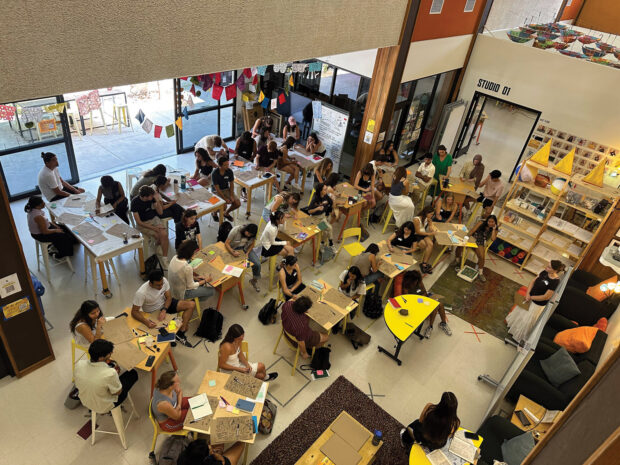
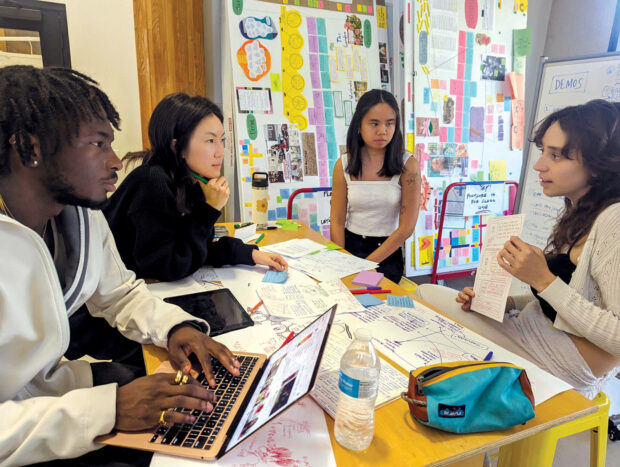
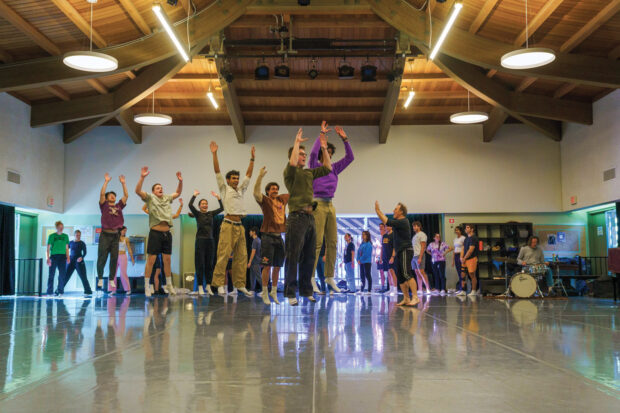
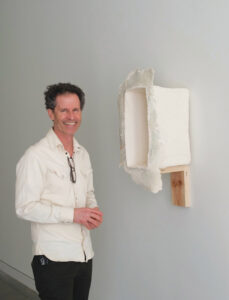
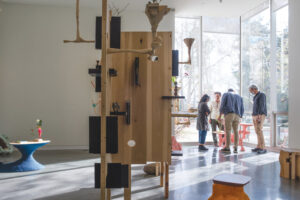
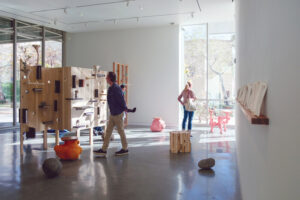
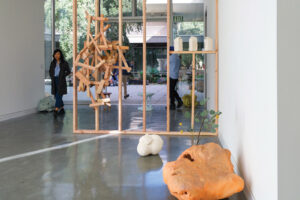



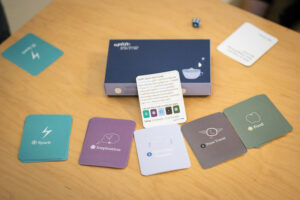
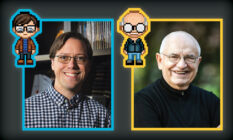
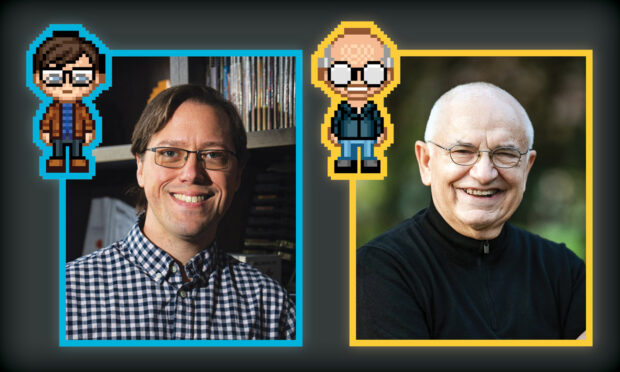





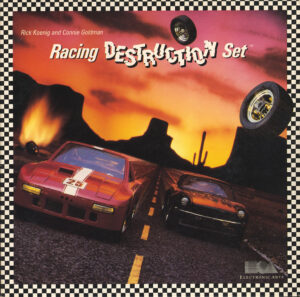
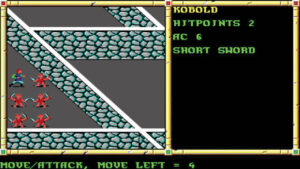

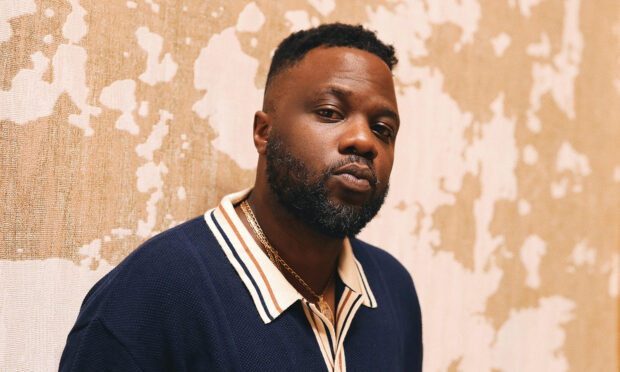
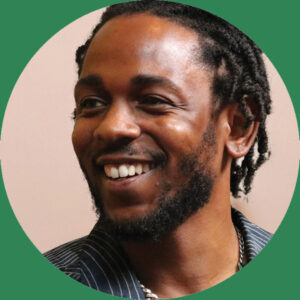 Kendrick Lamar
Kendrick Lamar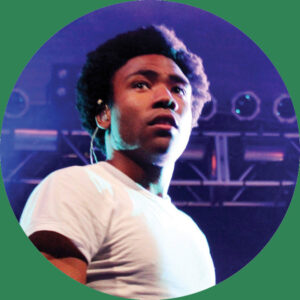 Childish Gambino
Childish Gambino H.E.R.
H.E.R. Doja Cat
Doja Cat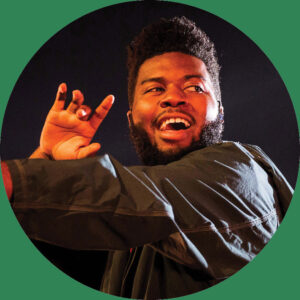 Khalid
Khalid
